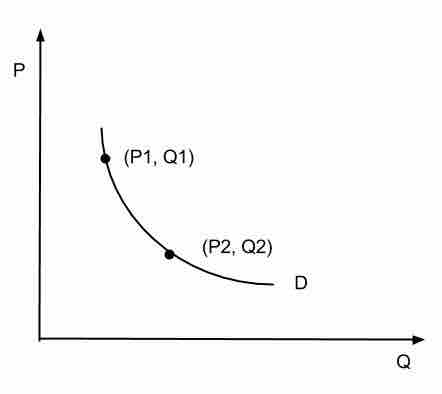The basic formula for the price elasticity of demand (percentage change in quantity demanded divided by the percentage change in price) yields an accurate result when the changes in quantity and price are small. As the difference between the two prices or quantities increases, however, the accuracy of the formula decreases. This happens because the price elasticity of demand often varies at different points along the demand curve and because the percentage change is not symmetric. Instead, the percentage change between any two values depends on which is chosen as the starting value. For example, when the quantity demanded increases from 10 units to 15 units, the percentage change is 50%. If the quantity demanded decreases from 15 units to 10 units, the percentage change is -33.3%. Two alternative elasticity measures can be used to avoid or minimize the shortcomings of the basic elasticity formula.
The midpoint method calculates the arc elasticity, which is the elasticity of one variable with respect to another between two given points on the demand curve . This measure requires just two points for quantity demanded and price to be known; it does not require a function for the relationship. The midpoint method uses the midpoint rather than the initial point for calculating percentage change, so it is symmetric with respect to the two prices and quantities demanded. The arc elasticity is obtained using this formula:

Arc Elasticity
To calculate the arc elasticity, you need to know two points on the demand curve. The calculation does not require a function for the relationship between price and quantity demanded.
Suppose that the price of hot dogs changes from $3 to $1, leading to a change in quantity demanded from 80 to 120. The formula provided above would yield an elasticity of 0.4/(-1) = -0.4. As elasticity is often expressed without the negative sign, it can be said that the demand for hot dogs has an elasticity of 0.4.
The point elasticity is the measure of the change in quantity demanded to a tiny change in price. It is the limit of the arc elasticity as the distance between the two points approaches zero, and hence is defined as a single point. In contrast to the midpoint method, calculating the point elasticity requires a defined function for the relationship between price and quantity demanded. The point elasticity can be calculated with the following formula:
In the formula above, dQ/dP is the partial derivative of quantity with respect to price, and P and Q are price and quantity, respectively, at a given point on the demand curve.